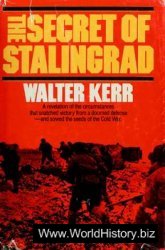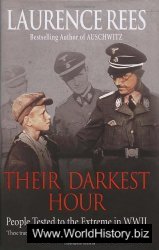In the United States there has been a well-established legend that the Freemasons were behind the American
Revolution. They are said to have instigated violent resistance to the British and to have defied British attempts to impose taxation without representation by holding the Boston Tea Party in 1773; they drew up the Declaration of Independence in 1776, provided the leadership during the Revolutionary War, and drafted the Constitution in 1787.
But the role of the Freemasons has been exaggerated. A few Freemasons may have participated in the Boston Tea Party, but it was planned and executed by a group of radical artisans called the Sons of Liberty. Of the Committee of Five who drew up the Declaration of Independence, only one, Benjamin Franklin, was a Freemason; the Declaration was almost entirely written by Thomas Jefferson, who was not a Freemason. Of the fifty-five Americans to sign the Declaration of Independence, only nine were certainly Freemasons; and of the thirty-nine who approved the Constitution, only thirteen were or later became Freemasons. George Washington had become a Freemason at the age of twenty but did not take it seriously, regarding his lodge as a social club and showing up for only two meetings in the next forty-one years. The higher ranks of Freemasonry in the American colonies were pro-British and remained loyal to the Crown, as did at least a third of the American population. Benedict Arnold, who won the first great battle of the revolutionary war for the Americans at Saratoga, and who then defected to the British (so that in America his name is synonymous with treason) was a Freemason.
fet in 1793, at the dedication of the Capitol building, George Washington, in his capacity as first president of the United States, but wearing his masonic apron, placed a silver plate upon the foundation stone and covered it with masonic symbols of maize, oil and wine. An inscription on the silver plate made the identification of the new republic with masonry absolutely clear: the stone had been laid, it stated, ‘in the thirteenth year of American independence, and in the year of Masonry, 5793’-that being the generally accepted number of years since God’s creation of the world. After the successful conclusion of the War of Independence, and for a generation after. Freemasonry was widely considered to be the foundation stone of the republic. The explanation lies in the creation of the revolutionary army with Washington at its head. His officers had been thrown together from a diversity of regional origins, religions and social rank, and had great responsibilities thrust upon them. Freemasonry had been popular among officers in the British army in North America, and the revolutionary army continued the practise of having military lodges, which it turned to good account. Freemasonry’s ideals of honour and fraternity offered American officers the bonds on which to build the camaraderie necessary for the survival of the army, and therefore of the American republic.
But for mythomanes there is more to it than that. The monumental building constructed to house the Senate and the House of Representatives on Capitol Hill was part of the grand plan for the entire city designed in 1791 by Pierre Charles L’Enfant, a Frenchman who served in General George Washington’s staff as a military engineer throughout the revolutionary war. Though Washington appointed L’Enfant to layout the new city, L’Enfant was not a Freemason, but the conspiracy theorists insist he was; and they say that his rectangular street grid overlaid by diagonal avenues creates a series of masonic patterns that also reflect the pattern of the stars. The harmony between the heavens and the earth would work its powers on those who inhabited the city, the capital of the new republic. As once the god Shalom had manifested himself on the Ophel Hill as the evening star, confirming Jerusalem as a sacred place, so Washington would become the new Jerusalem, its activities sanctified by its relationship with the spiritual world as symbolised by the stars.
Powerful masonic symbols have also been discerned in the Great Seal of the United States, which is reproduced on the reverse of the dollar bill. The seal was commissioned by Congress on 4 July 1776, immediately after it had voted its approval of the Declaration of Independence, but it would pass through three committees and take six years before a final design was approved. Benjamin Franklin, who was on the first committee, was the only Freemason involved, and his non-masonic suggestion that the seal should depict the Jews escaping from the tyranny of pharaoh was rejected. The obverse of the seal shows an eagle clutching thirteen arrows, an olive branch with thirteen leaves and thirteen fruits, the eagle defended by a shield with thirteen stripes, and above his head thirteen stars arranged in the form of the Seal of Solomon, also known as the Star of David. Thirteen represents the original thirteen American colonies that rebelled against Britain and came together to form the United States. The motto reads ‘E Pluribus Unum’, meaning ‘Out of Many, One’. The arrangement of the stars has aroused speculation, but biblical and Hebrew symbolism were as common in the eighteenth and nineteenth centuries as classical symbolism. Charles Thomson, a Latinist who was Secretary of Congress and the person who set the various ideas for a seal into their final form, explained simply that ‘the constellation of stars denotes a new State taking its place and rank among other sovereign powers’.
The reverse of the seal shows a pyramid surmounted by an eye. The pyramid has thirteen courses and is inscribed at its base with MDCCLXXVI. There are two mottoes, one above the eye, the other below the pyramid. Again Charles Thomson gave his explanation: ‘The pyramid signifies strength and duration: The eye over it and the moVLo, Annuit Coeptus [He [God] Has Favoured Our Undertakings], allude to the many interventions of Providence in favour of the American cause. The date underneath is that of the Declaration of Independence, and the words under it, Novus Ordo Seclorum [A New Order of the Ages], signify the beginning of the new American era in 1776.’
But ‘alternative histories’ and conspiracy theorists see things differently. They say that the pyramid and the eye on the reverse of the Great Seal are masonic and amount to a code. Expert Freemasons deny this, saying that the seal is not a masonic emblem, nor does it contain hidden masonic symbols. Certainly the pyramid is not masonic. But the eye does figure in masonic imagery, and it even appears on the Freemason’s apron worn by George Washington.
The point, however, is that there is nothing specifically masonic about the all-seeing eye, which was part of the cultural iconography of the seventeenth and eighteenth centuries. For example in 1614 the frontispiece of Sir Walter Raleigh’s History of the World showed an eye in a cloud labelled ‘Providentia’ overlooking a globe. Nevertheless, for those given to conspiracy theories the meaning lies elsewhere. For Robert Langdon, the hero in Dan Brown’s Angels and Demons, novus ordo seclomm translates as ‘new secular order’, and for others it prefigures the ‘new world order’ announced by George H. W. Bush before a joint session of Congress after Saddam Hussein had invaded Kuwait and the United States was mustering a coalition to drive the Iraqi forces back. ‘Out of these troubled times’. Bush told Congress, ‘our fifth objective-a New World Order-can emerge: a new era.’ The speech was delivered on 11 September 1990, exactly eleven years before that other ‘9/1T.
Mormons, Freemasons and the Key to Solomon’s Temple
In 1844 when Joseph Smith, the founder of the Mormons, was being attacked by a mob in Illinois, he barely managed to cry out, ‘Oh Lord, my God’ before he was shot and ki lied. These were the fi rst words of a recognised distress call among Freemasons-‘Oh Lord, my God, is there no help for the widow’s son?’ The phrase arises from the ritual enacted by Freemasons who are being admitted to the third degree, that of Master Mason, which allows them to participate fully in all aspects of their brotherhood. The drama at the centre of this initiation ritual is the murder of Hiram, ‘the widow’s son’ of the Bible, whom the Freemasons call Hiram Abiff. The initiate acts out the sufferings of Hiram Abiff, who while vowing to protect the Freemasons’ secrets with his life, calls out, ‘Oh Lord, my God, is there no help for the widow’s son?’
Joseph Smith was himself a Freemason, as were his brotherand his father and manyof theirfriends and coreligionists; Brigham Young, who was Smith’s successor as leader of the Mormons and led them into Utah where they founded Salt Lake City, was likewise a Freemason. In America Mormonism and Freemasonry grew out of the same soil. Indeed there are many parallels between Mormonism and Freemasonry, Including degrees of elevation, sacred treasures hidden In the earth, an Interest In ancient Israel and Egypt, symbolic clothing, secret means of recognition and a belief In the creative role of a supreme being.
Also both organisations have made extensive use of such motifs as the beehive, the square and compass, the all-seeing eye, the two right hands clasped to one another, and the sun, the moon and the stars. In particular. Masonic legends of a lost sacred word, once engraved upon a triangular plate of pure gold, profoundly affected the Smith family, which became well known for Its treasure-hunting activities; and It was on such plates of gold, unearthed by Joseph Smith In upstate New York, that he found what he said were the words of the Angel Moroni and which he translated and published as the Book of Mormon, the gospel of the new faith of which Smith himself was Its prophet. The mission of the Mormons Is to restore the true revelation which became corrupted after the death of Jesus. And according to the Mormons their rituals and symbolism have come to them by divine revelation and originate In Solomon’s Temple.




 World History
World History









